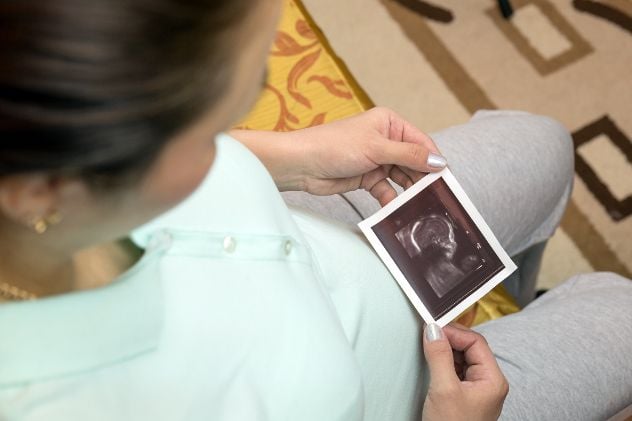
Amniotic Fluid
Amniotic fluid surrounds your baby in the uterus. In the first trimester, amniotic fluid is produced by the mom’s circulatory system and is primarily made up of water. After the first trimester, your baby will begin to breathe and swallow amniotic fluid. This helps to support the development of your baby’s lungs and digestive system. In the second trimester, your baby will begin to produce urine. Once your baby starts producing urine, fetal urine becomes the main substance in the amniotic fluid.
Amniotic fluid provides cushioning for your baby. She can move around in it and strengthen her bones and muscles. It is also important for the development of your baby's lungs and other organs. If you have too little amniotic fluid it is called oligohydramnios; if you have too much amniotic fluid it is called polyhydramnios.

What Is Oligohydramnios?
About eight percent of pregnant women will have low amniotic fluid and four percent will be diagnosed with oligohydramnios. Oligohydramnios (low amniotic fluid) is diagnosed from ultrasound findings. Your doctor will measure the pockets of amniotic fluid surrounding your baby to determine how much amniotic fluid you have.
Amniotic Fluid Index (AFI)
There are several ways that doctors determine how much amniotic fluid a woman has, but the most common measurement is the amniotic fluid index or AFI. Your doctor will measure the largest pockets of amniotic fluid in four different quadrants of your uterus. He will add up these measurements and the total will be your AFI. If your amniotic fluid index is less than 5 centimeters then you have oligohydramnios (low amniotic fluid); if it is greater than 25 centimeters, you have polyhydramnios.

What Causes Oligohydramnios (Low Amniotic Fluid)?
In the majority of cases, the cause of oligohydramnios is unknown. Some other causes of low amniotic fluid include:
- premature rupture of membranes or leaking membranes
- problems with the placenta
- intrauterine growth restriction
- birth defects (particularly kidney or urinary tract defects)
- certain maternal medical conditions (such as diabetes, preeclampsia, lupus, or high blood pressure)
- twin-to-twin transfusion syndrome
- post term pregnancy
How Is Oligohydramnios (Low Amniotic Fluid) Treated?
If you are diagnosed with oligohydramnios, your doctor will want to monitor you very closely. You will likely receive weekly ultrasounds (or more) to make sure that your amniotic fluid is not decreasing. You may be given non-stress tests or be asked to do fetal kick counts to see how your baby is doing. If your amniotic fluid decreases your doctor may want to induce labor. Low amniotic fluid may increase your risks of complications during labor. The concern with oligohydramnios is that the fluid may become so low that there is nothing cushioning the umbilical cord, and it could become compressed. If this happens, it can cause your baby to go into distress. To help avoid labor complications, your doctor may insert a tube into your cervix during your labor that will fill your uterus with saline fluid. If your baby shows signs of distress, a c-section may become necessary.
